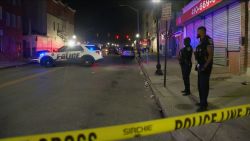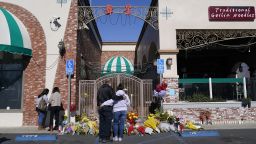You’ve probably heard these three words – run, hide, fight.
The tactics from the FBI, echoed to law enforcement agencies across the country, have been used for decades to teach civilians their options if confronted by an active shooter: evacuate the area, find a place to hide, or – as a last resort – take action against the shooter.
More and more, though, engaging the gunman may prove more effective than the other choices, CNN National Security Analyst Juliette Kayyem said, with at least one US community shifting away from the “hide” piece in lieu of more active defensive steps.
“With killers having the capacity to end the lives of so many people so fast, neither running nor hiding may be the best first option,” Kayyem wrote in a recent op-ed for The Atlantic. “It is our reality. I don’t love it; I don’t even like it.”
Confronting a gunman sometimes has proven the better course of action as the seemingly endless toll of US mass shootings – with more than 50 so far this year – keeps mounting, especially at places traditionally seen as safe.
Brandon Tsay this month disarmed a shooting suspect as he entered a second dance studio after killing 11 people in Monterey Park, California. Army veteran Richard Fierro was one of two clubgoers who took down a suspected gunman in November at an LGBTQ nightclub in Colorado. And James Shaw Jr. ended a deadly 2018 shooting at a Waffle House in Tennessee by ambushing the shooting suspect before more lives were lost.
“Things have changed,” Kayyem told CNN. “There’s more mass shootings, the weaponry is faster, it’s more deadly, a lot of damage can be done in a little period of time. And as we’ve seen in some cases, we can’t totally depend on law enforcement.”
‘Run, hide, fight’ empowers people, FBI says
The “run, hide, fight” guidance has been used for years, said Kayyem, an Obama-era assistant secretary for Homeland Security and now faculty chair of the homeland security program at Harvard’s Kennedy School of Government
An FBI training video that simulates customers caught in a shooting at a bar instructs people to “run, hide, and fight” to improve their chances of survival. It reminds civilians to always be aware of alternate exits, keep hands empty and visible when exiting a building, and lock and barricade a door if hiding is the best option.
People should only fight as a last resort and work with others to improvise weapons and coordinate an ambush, the video says.
“By employing the run, hide, and fight tactics, as well as knowing the basics of rendering first aid to others, they are prepared, empowered, and able to survive the attack,” the FBI said, proffering a tactic also endorsed by the US Department of Homeland Security and amplified across police departments, university campuses, workplaces and other community spaces.
But given how often mass shootings now erupt and the firearms employed, “the time is now to rethink how we prioritize what we’re telling people who might find themselves in a mass shooting,” Kayyem said, noting she’s “not saying everyone has it in them to engage a gunman, but … not sure that that should be the last option.
“What we’ve seen in a lot of these active shooter cases now is that engagement with the shooter – trying to distract him, trying to demobilize him, trying to prevent him from reloading his gun – all of those things can help in minimizing the harm.”
Alternate protocol shifts away from ‘hide’
For the past eight years, authorities in Franklin County, Ohio, have adopted a different way of teaching the community how to respond to an active shooter situation – “avoid, deny, defense.”
The biggest change is a shift away from the traditional “hide” tactic, sheriff’s Deputy Mike Fetherolf said. Instead, the newer guidance advises doing what you can to deny the shooter access to you – such as keeping your distance and creating barriers – rather than hiding and potentially waiting for a gunman to find you.
“When we talk about this ‘hide,’ that’s the big part that is different,” Fetherolf said. “These people go around looking for targets … when you have a hero step up, it saves all of those targets from being potential victims.”
Still, crafting guidance for active shootings is not a one-size-fits-all solution, and fighting back hasn’t always worked, experts recognize. A North Carolina college student charged a gunman during a 2019 attack and died, and a week later, a Colorado high school student met the same fate.
Either way, training civilians is an important part of keeping communities safe, especially as mass shootings have affected nearly every facet of American life, security experts have said.
“Fifty percent of active shooter events end before law enforcement get there, and what that statistic tells us as law enforcement is it doesn’t even matter how much we train for these active events, but it matters a lot on how we train our civilians and how civilians respond because they’re always there,” Fetherolf said.
Added Kayyem: “The more we talk about it, the more we understand about what tactics of engagement do work, the more we can empower people to help and protect themselves.”


























